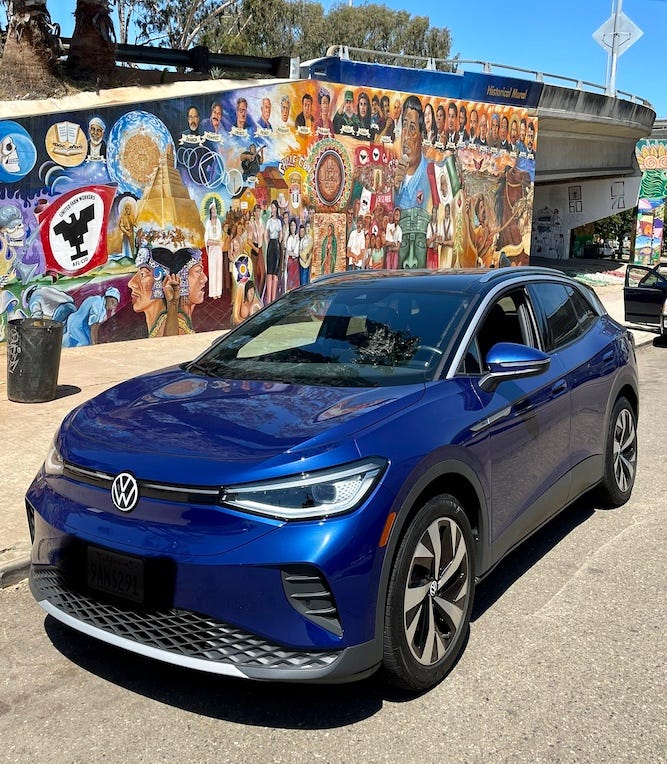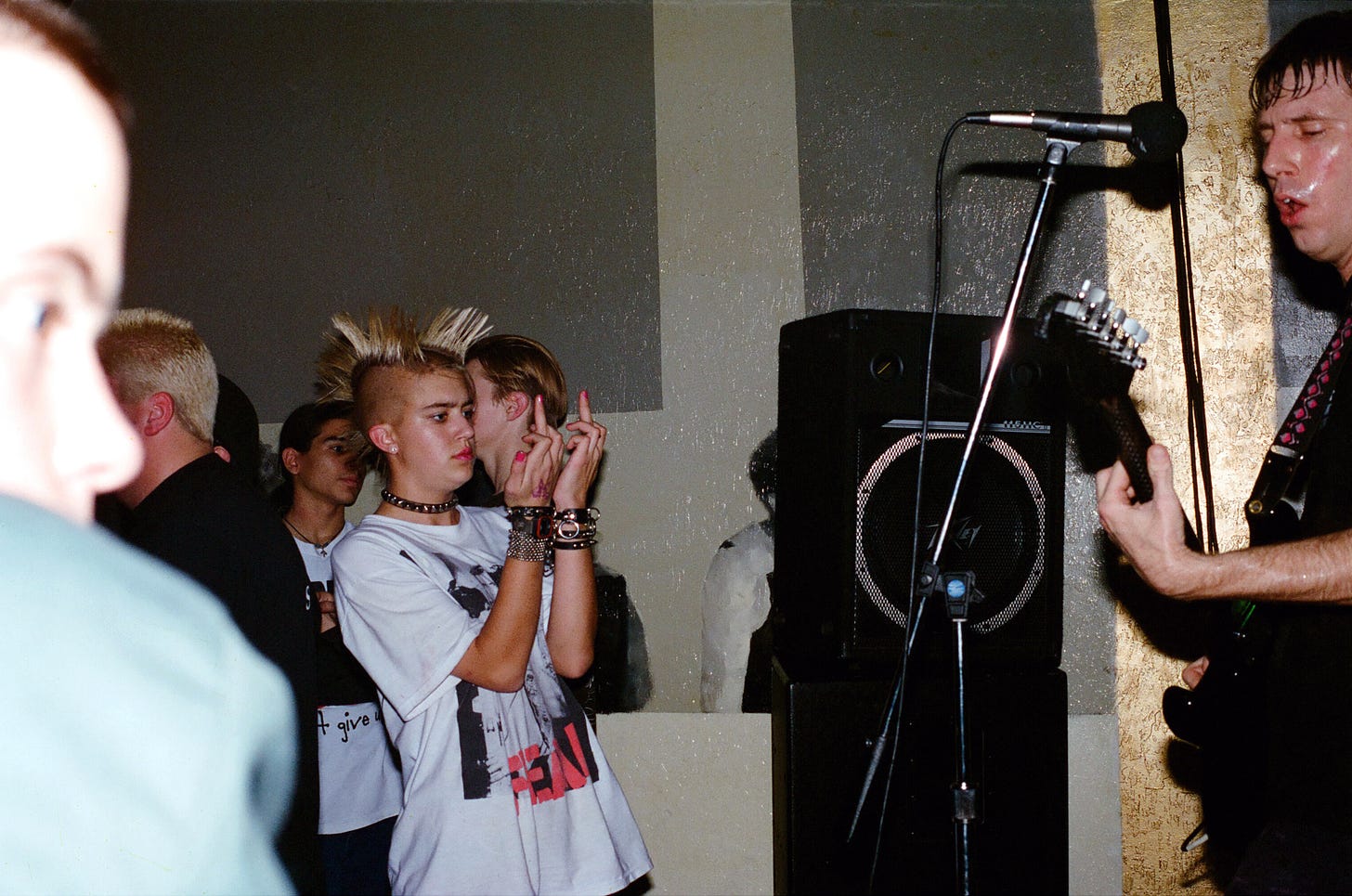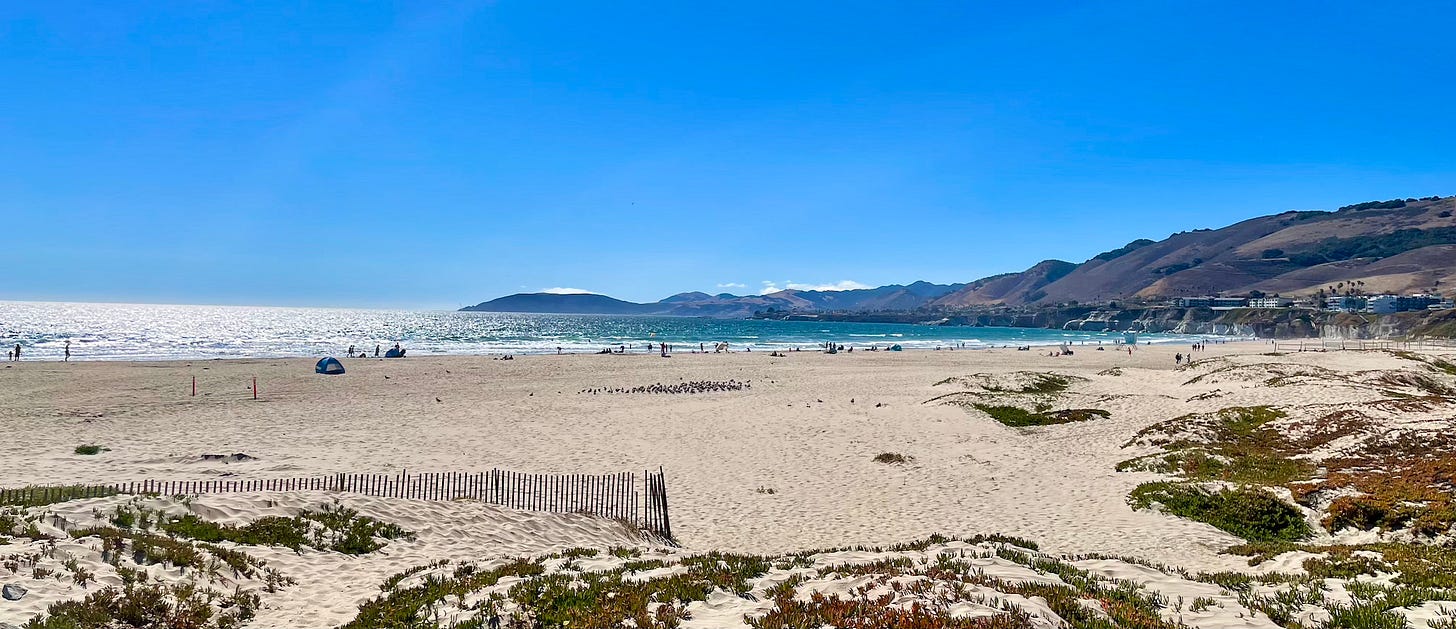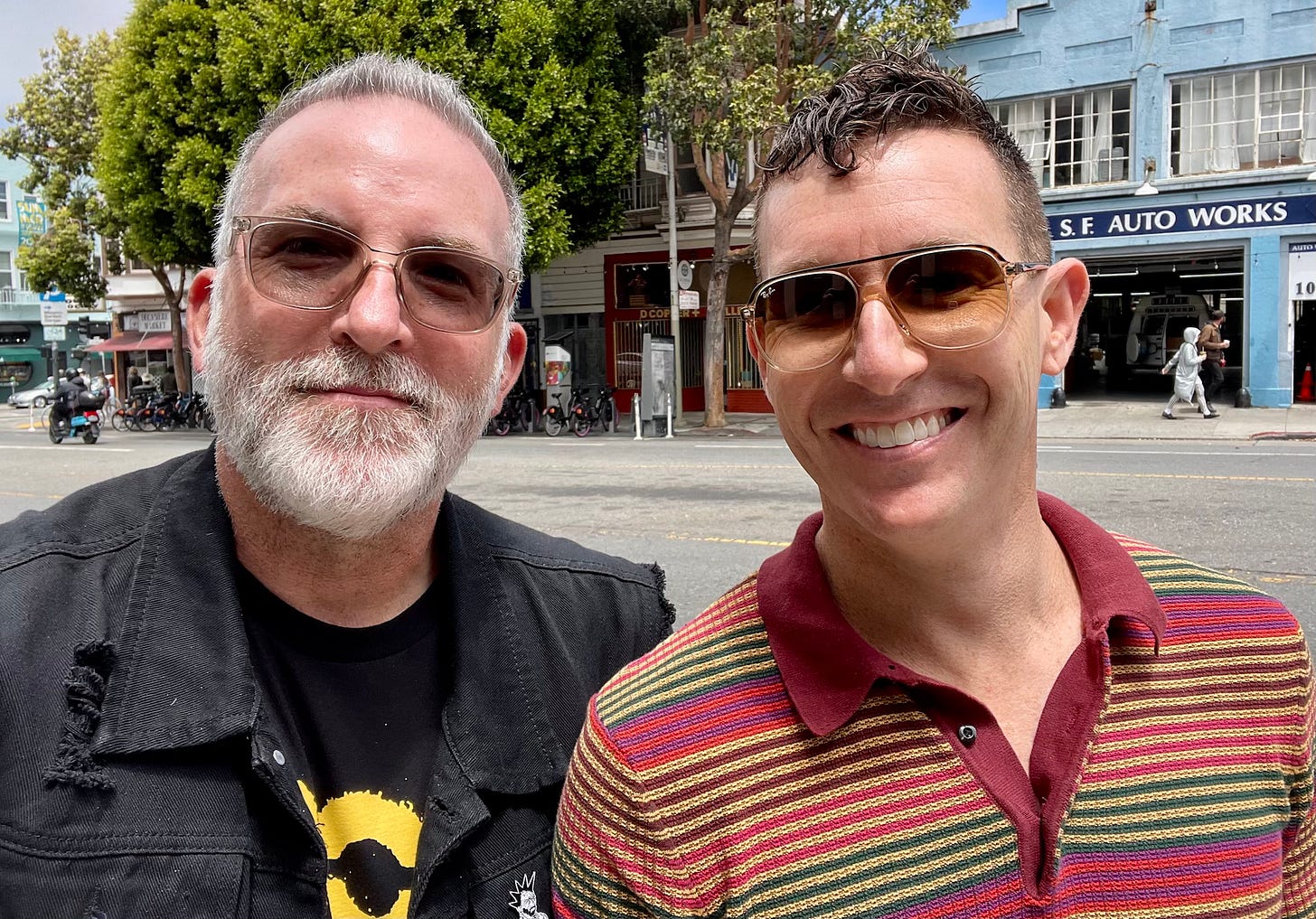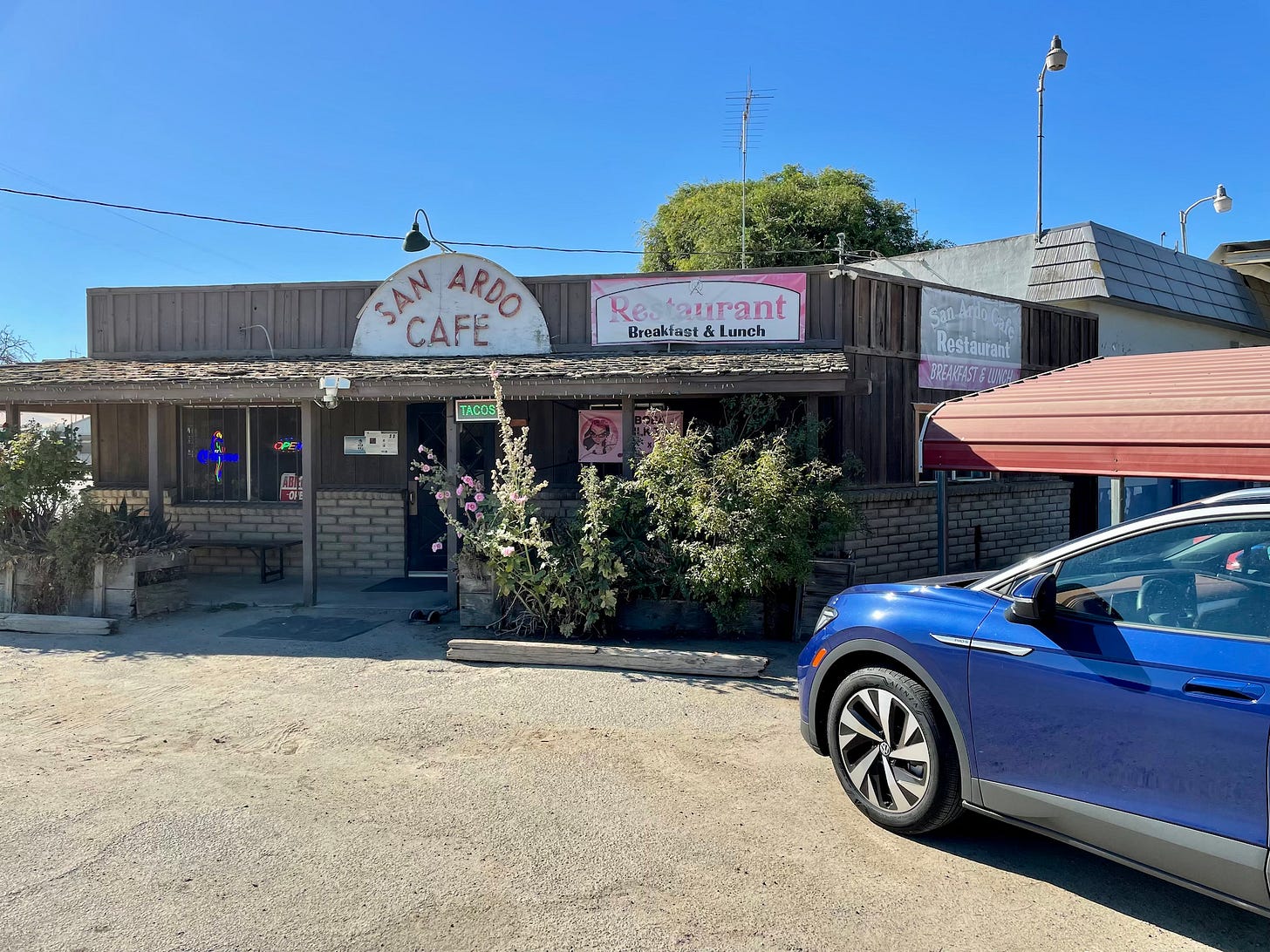I’m back from the Electric Coast Corporate Rock Sucks Tour. I was invited to do a reading at a record store in San Francisco and made plans to drive up to coast with a box of my books. I figured it would give me a chance to see how my new Volkswagen ID.4 performed on a long trip. The reading was cancelled due to COVID but I went up to SF anyway, which means it wasn’t a tour at all, but I kept referring to it as one. Confused? Maybe this will help…
When Nuvia and I got hitched, little did I know I was marrying a Volkswagen obsessive. When I met her she still had the blue 2004 VW Golf that she bought after college. I made the mistake of referring to it as a Pepsi can and she nearly kicked me out of the car. I convinced her it was a term of endearment (it wasn’t) but it became one. Crisis averted!
I won’t walk you through all the VWs we have bought, sold, and, um, totaled, but the ID.4 is our fifth. We ordered the car last October, knowing it would take a while for the car to be built in Germany and shipped across the ocean, but it took a lot longer than we expected. We live in South San Diego and when you head west on the 54 to go north on the 5, you can see where the VW cargo ship docks. Nuvia tracked the comings and goings of that ship like a suspicious lover. When the Felicity Ace, which was carrying 4,000 vehicles, including some ID.4s, sank in the Atlantic Ocean in February, Nuvia was convinced our car was on it.
It wasn’t, thankfully, and our new ID.4 finally arrived in April. (If you’re looking to perform a stress test on your marriage I recommend sharing a car for six months.) I’ll be honest, it took me a while to warm up to the new car. I’m a creature of habit. I like old comfortable things. A broken-in shirt, a well-thumbed book, a record with a slightly worn jacket. Hell, getting rid of an old sofa was a traumatic event for me. I like new technology, but I also like things that work, and when I find something that does, I stick with it. Let someone else test out the new stuff.
Owning a fully electric vehicle required some adjustments not only to my driving habits but to my way of thinking. We opted not to purchase a home charging station because our vehicle came with free charging for three years through Electrify America. Fully charged, our vehicle can travel 250 miles, but the actual travel numbers are less because you never want to let your vehicle get down to zero. Cars aren’t phones and the consequences of a dead battery are a bit more drastic.
Charging the car exclusively through Electrify America requires coordination. For instance, as near as I can tell there are only 800 charging stations in California, which is more than any other state but is nowhere nearly as plentiful as gas stations. (To put it in perspective, there are approx. 2,500 Starbucks in California.) Thankfully, there’s an app that shows you where the closest Electrify America charging station is located, directions for getting there, and how many chargers at the station are available.
This is all very new. The first cross country trip facilitated through Electrify America didn’t take place until 2020. In 2020 Electrify America conducted a little over a quarter of a million charging sessions. That number jumped to almost 1.5 million in 2021. That number will surely increase in 2022. By taking the ID.4 “on tour,” my middle-age ass was taking a bold leap forward.
Last weekend I charged the car at the station at the BofA parking lot in North Park, walked down the street to the Observatory, and watched TSOL play for about 45 minutes. The app let me know when the car was finished charging. After that I had a ten-minute grace period before it would start charging me. The charge is to prevent people from leaving their cars at charging stations indefinitely. As TSOL was wrapping up its set, my car was ready to go on tour.
I’ve officially entered the future.
Day 1: San Diego to LA
I drove up to LA and stopped for lunch at MVR Melrose, a Veracruz style restaurant I’ve been wanting to try. I had the best chile relleno I’ve had in years and an empanada with Oaxacan cheese. Amazing.
Then it was off to Razorcake HQ in Highland Park to hang out with Todd Taylor, but first I wanted to charge the car so I could get an early start in the morning. The first spot I went to was full so I drove to another one a mile away. A technician was performing maintenance on the charging stations. He had a big, futuristic looking box on the ground that was hooked up to the station.
“Is this job dangerous?” I asked.
He laughed and said he’d been shocked a few times but no. It was safe. He was the regional supervisor for all of Los Angeles he told me. Apparently, someone had cut off the charging cables and stolen them, and he’d been there all day replacing them.
“I told them not to put a station in this neighborhood,” he said and went back to work.
I drove to Highland Park and ate spaghetti with Todd. We talked at length about Pistol, a conversation I’ve been having with all my punk rock friends and which is bound to make its way here to Message from the Underworld.
Day 2: LA to Morro Bay
I left LA around 6 am so I would make it up to Oxnard in time to meet Fred Hammer. After walking on the beach I met Fred for breakfast. Fred was born and raised in Oxnard, is a longtime supporter of the Nardcore scene, released a record with his band Annihilation Time, and runs the zine It’s Alive. He’s a get-shit-done kind of person and he contributed a photo to Corporate Rock Sucks. It’s a shot of Greg Ginn playing in Simi Valley. When I asked if he had any photos of Greg, he sent over a batch of photos, including this one:
Fred steered me to Salzer’s Records in Ventura, which is kind of like a Tower Records that time forgot. It’s also home to the largest collection of Nardcore records, T-shirts, patches, pins, and other assorted merch on the planet. Salzer’s agreed to take some copies of Corporate Rock Sucks on consignment and I left with a reissue of this classic 1984 Nardcore compilation.
Then it was off to Ojai where I spent an hour browsing the world’s largest outdoor bookstore before heading to Solvang where I found a charging station in between a CVS and the National Park Service HQ. I was averaging about 175 miles between charges. With all the coffee I was drinking that worked out pretty well. Fill up the car and empty the bladder. (Pro tip CVS has clean bathrooms.)
From Solvang I descended the mountains to Pismo Beach. For a cinnamon roll, a surprisingly good espresso, and a short stroll along the pier. Finally, I drove up to Morro Bay where the fog laced its fingers over the mountaintops and the foghorn reverberated throughout the sleepy seaside town.
I saw such beautiful scenery that day: rolling hills, stark mountains, and the lush Pacific coastline. I felt really good about driving around California and enjoying its beauty without polluting it. Actually, I felt better than good. I felt unexpectedly great. When we first bought the car, it felt like an expensive toy, a luxury item, but the more I drive it the more attuned I’ve become to what the vehicle represents for the future of the planet.
In Morro Bay, I hung out with Razorcake’s Sean Carswell and Felizon Vidad, former colleagues at NAU who met in grad school and have been happily ever after since. Sean is one of those infuriating people who can seemingly do it all: play guitar, run half-marathons, build anything you need with wood. He’s also a hell of a writer. His current project is building a ukulele and he showed me the sorcery involved in bending the wood to craft the instrument.
Day 3 & 4: Morro Bay to San Francisco
Another early start and I made my way through Central California to a travel center in Soledad to charge the car. I had breakfast in a Denny’s while the vehicle got juiced up. On the long, straight roads I finally got the hang of the vehicle’s cruise control and driver assist functions, which I’d rarely used when driving the car in San Diego.
The cruise control works in tandem with the driver assist and automatically slows down when it senses a car in front of you and then speeds back up to reach the targeted speed once the coast is clear. This was very helpful on the 101’s two-lane roads. Although the traffic was light it tended to bottleneck. Acceleration uses up the battery’s power, deceleration renews it. Using cruise control while going downhill is a great way to recharge the battery while the vehicle is in use.
Driving an electric vehicle requires a different mindset. If you drive around with the pedal to the floor, especially when driving up inclines, you’ll burn through the battery faster, which doesn’t make sense because then you have to charge it sooner, which involves sitting around and waiting for the car to charge. (It can take up to an hour to fully charge a vehicle that’s close to empty.) So the concept of “making good time” on a trip goes out the window. Time becomes secondary to conserving battery life. The objective isn’t to drive fast to get there faster but to conserve the battery’s power so you can travel farther and/or spend less time at the charging station. It’s a completely different way to look at travel. Have you ever taken a long trip and at the end you felt like the only things you saw were gas stations and rest stops?
I reached San Francisco and checked into my hotel, which offered to charge the car for $10. Another sign of the times.
I mostly stayed in the hotel and worked on a project I’ll tell you about soon. The following day I met up with Josh Mohr, who was in town to do a reading with Jerry Stahl at Green Apple Books. It was also Josh’s birthday, which, if I’m being completely honest, is the real reason I made the trip. We walked around the city, ate and drank espresso, and then repeated the process until it was time for his event with Jerry.
Jerry’s new book Nein, Nein, Nein! documents a bus tour he took in 2016 of concentration camps. That sounds horrible, and it was, but through the lens of Jerry’s acerbic wit and mordant humor that made his memoir Permanent Midnight so memorable, it’s also pretty damn profound. I won’t go on and embarrass Jerry, who told me he’s a reader of Message from the Underworld (Hi Jerry!), but you should definitely check out Nein, Nein, Nein!
Josh moved from SF to Seattle a few years ago when the rent got too high and he misses it terribly. So the next day we ate burritos at Cancun Taqueria and walked around the Mission. He pointed out places where he used to live and scenes from his memoir Model Citizen. On a shady side street we saw a man in a suit sweeping a sidewalk, which I thought was odd. Then I saw the “Open House” sign.
“That guy,” Josh said, “is the enemy.”
Day 5 & 6 SF to Moss Landing
The next stop on the tour was Pacific Grove to see my friends the novelists Mark Sarvas and Jennifer Carson. Originally I was going to spend the night but with a child in the house, all the traveling I’d been doing, and COVID numbers rising, I decided to get a place to stay. I found a room at an inn in Moss Landing, a little fogbound fishing village northeast of Monterey.
I opted to stay a second day so I could get some writing done and I’m really glad I did as that gave me an excuse to go see an art show in nearby Watsonville. The show was called Three Punk Painters and My Mom and featured work by Penelope Houston of the Avengers, Debora Iyall of Romeo Void, and Judy Gittelsohn of Pink Section, Inflatable Boy Clams, and Longshoremen. These incredible women were part of the early San Francisco punk scene and met through the San Francisco Art Institute, a hub for the innovative and the offbeat.
I was blown away by the work on display. Penelope presented a series of portraits taken from mugshots snapped in the early 20th century. Debora couldn’t be there in person but Zoomed in from New Mexico and played music by her unnamed cover band. Judy’s work consisted of a series of large, colorful paintings inspired by events in her life. I also met one of Judy’s bandmates Carol Detweiler, and the writer Gina Arnold, whose book Route 666: On the Road to Nirvana I consulted when writing Corporate Rock Sucks. I was really impressed with the work and the show was well-attended and had tremendous energy. I thought about my mom, who was a painter, and how much she would have enjoyed it.
Watsonville may be small but it has an Electrify America charging station in the Food Maxx parking lot. Unfortunately, the station is too close to the store and three out of the four chargers were occupied by non-electric vehicles who were using it to park. A guy driving a blue ID.4 just like mine had to wait while some inconsiderate jerks did their shopping.
Day 7 Moss Landing to San Diego
This was my longest day on the road and a good opportunity to finish listening to Thomas Pynchon’s Vineland. On the way up the coast I mostly listened to the playlist I created last week, but Vineland, the longest of Pynchon’s California novels, was my companion on the way home.
I stopped in San Ardo for breakfast. Yelp directed me to 1 Cattleman Road but the cafe wasn’t at the address listed on the site. I kept driving and eventually found it. The cook told me that San Ardo didn’t really exist. There wasn’t a post office in town and the addresses were all kind of arbitrary. He said that when he bought a house the gas company couldn’t find his address in their system, so they asked for the number on the gas meter, which simply said RR.
Strange.
The breakfast burrito was excellent and I told him I’d be back.
“We’re here,” he said.
I stopped to charge at Bakersfield after running the battery down to 6%, which neither I nor Volkswagen recommends, but I made it. My iPhone alerted me to an accident on the Grapevine. Would I like to save an hour and drive through Lancaster and Palmdale?
I would not. I quickly calculated that the time “saved” by skirting the accident would result in many more miles driven and necessitate charging the vehicle sooner than I’d planned. Also, the accident cleared up pretty quickly so it ended up being a moot point. Apple can tell you what’s happening, but it can’t predict the future.
I stopped off at Razorcake again to pick up some stuff I’d accidentally left behind, hung out with Todd and Daryl for a bit, and then took off. I had enough juice to get home, but charged up outside a Target in Mission Viejo so I could get an espresso and send a few emails.
When I reached home that evening, I’d traveled a total of 1,195 miles and charged the vehicle seven times at a total cost of $10. The app tells me I’ve saved $256.28 and charged the car 10 times in the last 30 days, which works out to about $25 a session. If I’d driven our other car, a VW Gold TDI, which gets approx. 43 miles to the gallon on the highway, I would have used up approx. 28 gallons of fuel at $7 a gallon, which is what a gallon of diesel costs in California, and spent nearly $200 on gas. Obviously, most gas-powered cars aren’t diesel and don’t get 43 miles to the gallon. You can do your own math, but you can’t beat free. Also, when I returned home, a $2,000 rebate check was waiting for me from the folks at the Center for Sustainable Energy.
I didn’t love our ID.4 when I started my trip, but I do now. I love how the vehicle is forcing me to rearrange my priorities. The tyrant of time is no longer the main factor when taking a trip. Convenience has been kicked down a few notches too, which is a good thing. Our planet has been asked to sacrifice too much for the sake of convenience, and our relentless pursuit of it, whether we realize it or not, is part of why we’re in the mess we’re in.
Of course, using an electric vehicle will become more convenient as more people purchase them, and more charging stations come online. There are California companies like Rivian getting into the electric vehicle market and engineers are working to make the batteries better. We are only at the beginning of this new chapter in the history of transportation.
Not too long ago electric vehicles seemed like a pipe dream. Also, not too long ago, we lit our homes with whale oil. Considering its disastrous effect on the environment, I suspect someday people will view the burning of fossil fuels as crude and barbaric as slaughtering whales for their oil. Electric vehicles are here. It’s time to turn the page.
Got a question about electric vehicles? Post it in the comments!


